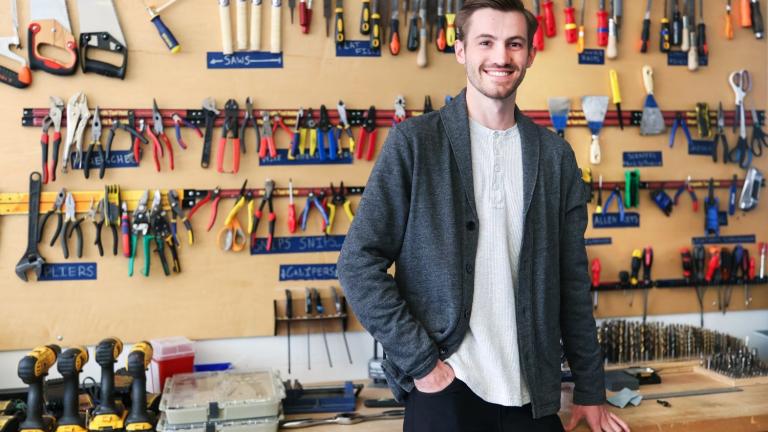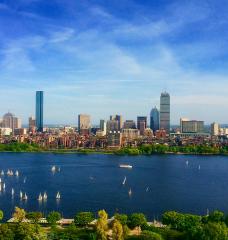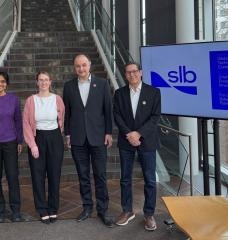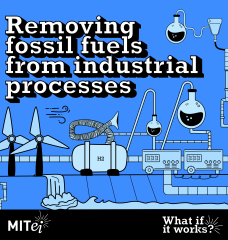
Awed as a young child by the majesty of the Golden Gate Bridge in San Francisco, civil engineer and MIT Morningside Academy for Design (MAD) Fellow Zane Schemmer has retained his fascination with bridges: what they look like, why they work, and how they’re designed and built.
He weighed the choice between architecture and engineering when heading off to college, but, motivated by the why and how of structural engineering, selected the latter. Now he incorporates design as an iterative process in the writing of algorithms that perfectly balance the forces involved in discrete portions of a structure to create an overall design that optimizes function, minimizes carbon footprint, and still produces a manufacturable result.
While this may sound like an obvious goal in structural design, it’s not. It’s new. It’s a more holistic way of looking at the design process that can optimize even down to the materials, angles, and number of elements in the nodes or joints that connect the larger components of a building, bridge, tower, etc.
According to Schemmer, there hasn’t been much progress on optimizing structural design to minimize embodied carbon, and the work that exists often results in designs that are “too complex to be built in real life,” he says. The embodied carbon of a structure is the total carbon dioxide emissions of its life cycle: from the extraction or manufacture of its materials to their transport and use and through the demolition of the structure and disposal of the materials. Schemmer, who works with Josephine V. Carstensen, the Gilbert W. Winslow Career Development Associate Professor of Civil and Environmental Engineering at MIT, is focusing on the portion of that cycle that runs through construction.
In September, at the IASS 2024 symposium "Redefining the Art of Structural Design in Zurich," Schemmer and Carstensen presented their work on Discrete Topology Optimization algorithms that are able to minimize the embodied carbon in a bridge or other structure by up to 20 percent. This comes through materials selection that considers not only a material’s appearance and its ability to get the job done, but also the ease of procurement, its proximity to the building site, and the carbon embodied in its manufacture and transport.
“The real novelty of our algorithm is its ability to consider multiple materials in a highly constrained solution space to produce manufacturable designs with a user-specified force flow,” Schemmer says. “Real-life problems are complex and often have many constraints associated with them. In traditional formulations, it can be difficult to have a long list of complicated constraints. Our goal is to incorporate these constraints to make it easier to take our designs out of the computer and create them in real life.”
Take, for instance, a steel tower, which could be a “super lightweight, efficient design solution,” Schemmer explains. Because steel is so strong, you don’t need as much of it compared to concrete or timber to build a big building. But steel is also very carbon-intensive to produce and transport. Shipping it across the country or especially from a different continent can sharply increase its embodied carbon price tag. Schemmer’s topology optimization will replace some of the steel with timber elements or decrease the amount of steel in other elements to create a hybrid structure that will function effectively and minimize the carbon footprint. “This is why using the same steel in two different parts of the world can lead to two different optimized designs,” he explains.
Schemmer, who grew up in the mountains of Utah, earned a BS and MS in civil and environmental engineering from University of California at Berkeley, where his graduate work focused on seismic design. He describes that education as providing a “very traditional, super-strong engineering background that tackled some of the toughest engineering problems,” along with knowledge of structural engineering’s traditions and current methods.
But at MIT, he says, a lot of the work he sees “looks at removing the constraints of current societal conventions of doing things, and asks how could we do things if it was in a more ideal form; what are we looking at then? Which I think is really cool,” he says. “But I think sometimes too, there’s a jump between the most-perfect version of something and where we are now, that there needs to be a bridge between those two. And I feel like my education helps me see that bridge.”
The bridge he’s referring to is the topology optimization algorithms that make good designs better in terms of decreased global warming potential.
“That’s where the optimization algorithm comes in,” Schemmer says. “In contrast to a standard structure designed in the past, the algorithm can take the same design space and come up with a much more efficient material usage that still meets all the structural requirements, be up to code, and have everything we want from a safety standpoint.”
That’s also where the MAD Design Fellowship comes in. The program provides yearlong fellowships with full financial support to graduate students from all across the Institute who network with each other, with the MAD faculty, and with outside speakers who use design in new ways in a surprising variety of fields. This helps the fellows gain a better understanding of how to use iterative design in their own work.
“Usually people think of their own work like, ‘Oh, I had this background. I’ve been looking at this one way for a very long time.’ And when you look at it from an outside perspective, I think it opens your mind to be like, ‘Oh my God. I never would have thought about doing this that way. Maybe I should try that.’ And then we can move to new ideas, new inspiration for better work,” Schemmer says.
He chose civil and structural engineering over architecture some seven years ago, but says that “100 years ago, I don’t think architecture and structural engineering were two separate professions. I think there was an understanding of how things looked and how things worked, and it was merged together. Maybe from an efficiency standpoint, it’s better to have things done separately. But I think there’s something to be said for having knowledge about how the whole system works, potentially more intermingling between the free-form architectural design and the mathematical design of a civil engineer. Merging it back together, I think, has a lot of benefits.”
Which brings us back to the Golden Gate Bridge, Schemmer’s longtime favorite. You can still hear that excited 3-year-old in his voice when he talks about it.
“It’s so iconic,” he says. “It’s connecting these two spits of land that just rise straight up out of the ocean. There’s this fog that comes in and out a lot of days. It's a really magical place, from the size of the cable strands and everything. It’s just, ‘Wow.’ People built this over 100 years ago, before the existence of a lot of the computational tools that we have now. So, all the math, everything in the design, was all done by hand and from the mind. Nothing was computerized, which I think is crazy to think about.”
As Schemmer continues work on his doctoral degree at MIT, the MAD fellowship will expose him to many more awe-inspiring ideas in other fields, leading him to incorporate some of these in some way with his engineering knowledge to design better ways of building bridges and other structures.






